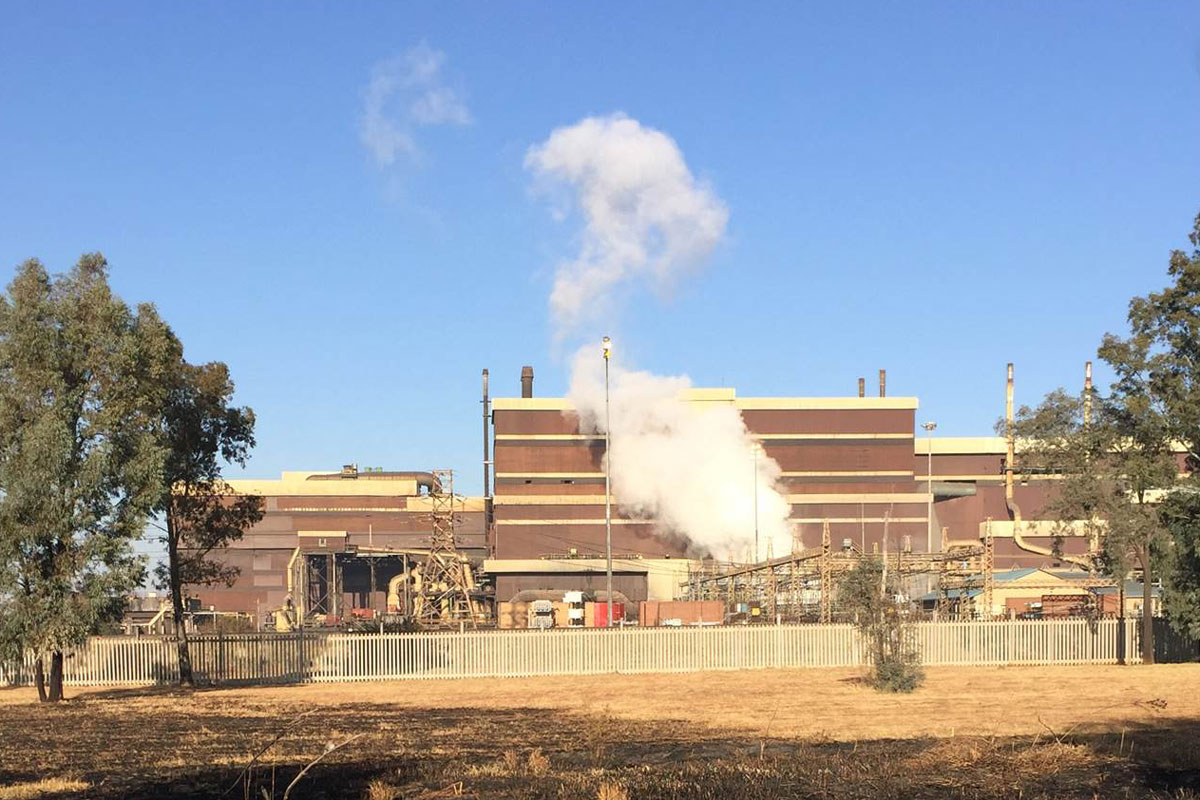$3.7 million to help research neurological disorders linked to manganese
Focus in South Africa, where most manganese found
 Getty Images
Getty ImagesA slag heap of manganese ore fills the sky in the picture above. Researchers at Washington University School of Medicine in St. Louis are studying whether people living near a manganese smelter are at increased risk of neurological problems.
Manganese – found in smoke from steel production and coal fires – has been linked to a range of neurological problems often seen with Parkinson’s disease: slowness, stiffness, tremors, anxiety, depression, cognitive changes, and difficulty walking and speaking.
Decades ago, federal environmental and public health agencies established manganese-concentration levels of concern for human health, but some scientists suspect that these levels should be lower.
Now, the National Institute of Environmental Health Sciences of the National Institutes of Health (NIH) is funding a $3.7 million study led by Washington University School of Medicine in St. Louis to determine whether people develop neurological damage from manganese at levels currently deemed safe.
“A pretty large area of the Midwest and the East has high industrial manganese exposures,” said Brad A. Racette, MD, the Robert Allan Finke Professor of Neurology and the study’s principal investigator. “A good percentage of our population, particularly those living in the Rust Belt, could have significant personal exposures.”
Racette teamed up with Gill Nelson, PhD, a professor at the University of the Witwatersrand School of Public Health in South Africa. Eighty percent of the world’s manganese is found in South Africa. Manganese mines dot the country’s Northern Cape region, and much of the metal is processed in one of the largest manganese smelters in the world, about 30 miles south of Johannesburg. The communities near the smelter have raised concerns about the metal, which is emitted into the air and eventually settles into the surrounding soil and water. In the United States, a similar process has contaminated land around iron- and steelworking facilities.
Racette and Nelson are studying a low-income community near the smelter to determine if residents living close to it have more difficulty with certain brain functions than those living farther from the smelter.
“We’re not looking for full-blown disease, but at a continuum of dysfunction that would preclude somebody from being able to function as well as someone without manganese exposure,” Racette said.
More than 300 people have enrolled in the study, and the researchers plan to enroll 700 more. The researchers have spent a year developing assessment tools in the four languages most commonly spoken in the area: Sotho, Xhosa, Zulu and Afrikaans.
A team of seven South Africans – all fluent in one or more of the local languages – administers questionnaires on anxiety and depression. They also ask participants to perform tasks such as memorizing and reciting sequences of numbers. Such tasks can identify cognitive deficits that suggest damage to the basal ganglia, a part of the brain involved in memory, paying attention and planning.
“Say you work in a factory and your job involves a complex series of steps,” Racette said. “Somebody who has been exposed to manganese may not be able to do all those steps as quickly or as accurately. He or she would have trouble holding that kind of a job.”
A board-certified neurologist and movement disorders specialist, Racette also examines each participant for problems with movement such as muscle stiffness, gait instability, reduced facial expressions and slow movement.
To estimate each individual’s lifetime exposure, the researchers are combining detailed occupational and residential histories with hourly air measurements of manganese, as well as soil levels and historical records on weather patterns.
“Manganese isn’t retained in any tissue, except the brain, for long enough to determine someone’s lifetime manganese exposure, so you can’t just draw blood or take hair clippings and find out how much manganese they’ve been exposed to in their lives,” Racette said.
Saliva, though, may contain information needed to estimate lifetime manganese exposure. Bits of genetic material known as microRNAs are found in saliva, and various patterns of microRNAs have been associated with several chronic diseases, including Parkinson’s.
The researchers hope to find out whether the collection of microRNA fragments in people’s saliva reflects the lifetime manganese exposure calculated from their work and geographical histories, or predicts their neurological health.
“Right now, people with mild neurological problems would only be identified if they went through a full examination with a qualified neurologist,” Racette said. “In a medically underserved community like this, people are unlikely to see a doctor until their symptoms become severe. It would be really helpful if we could identify who is on track to develop neurological problems based on just spitting in a cup.”
The study will continue for another three years. The smelter continues to release manganese, but even if the plant were to shut down, the effects of previous exposure would remain.
“Once you have a certain amount of exposure, the neurological damage doesn’t really reverse,” Racette said. “Even without ongoing exposure, the symptoms actually may continue to progress. This is a problem that’s not going away.”
 Brad Racette
Brad Racette






